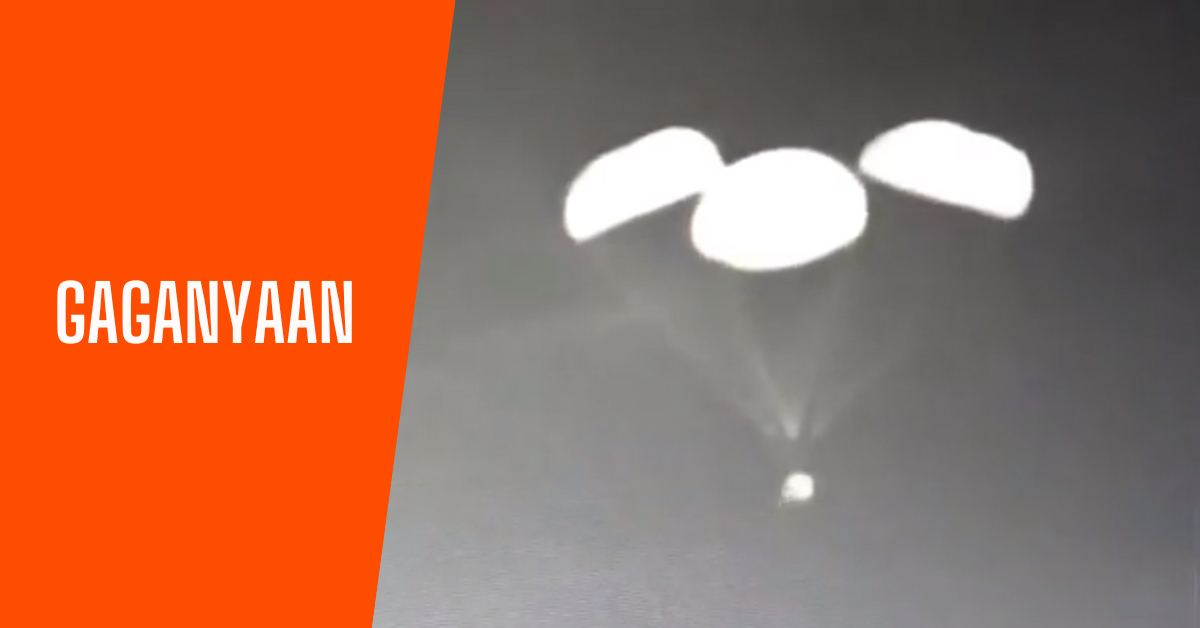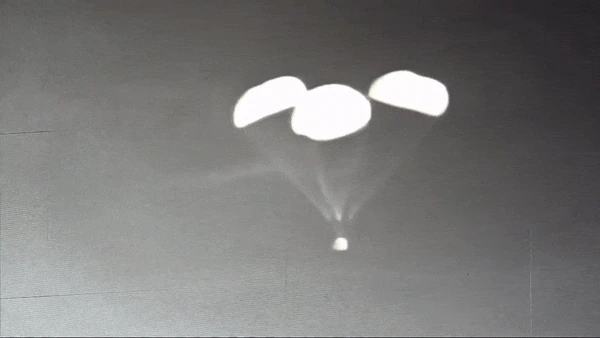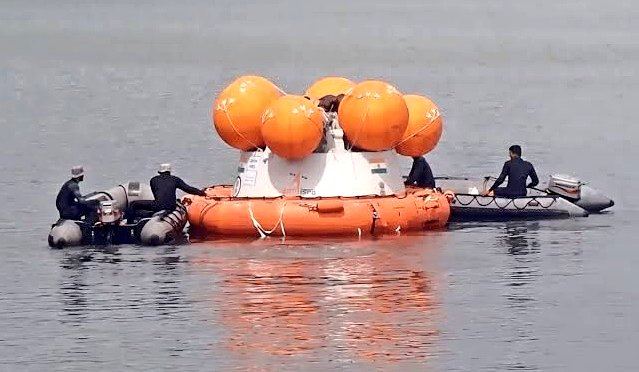India (ISRO) Takes a Giant Step in Astronaut Safety with Gaganyaan Crew Escape System Test

/ India’s ISRO Successful Gaganyaan Crew Escape Test – A Giant Leap in Astronaut Safety and Space Exploration.
Date: 21 Oct 2023, 16:50 PM IST
In an exciting development for India’s space exploration , the Indian Space Research Organisation (ISRO) achieved a significant milestone on Saturday, October 21. The nation conducted a vital uncrewed test of the emergency-escape system of its cutting-edge crew capsule. This achievement marks a critical step toward ensuring astronaut safety during future missions, most notably the much-anticipated Gaganyaan mission set to carry astronauts for the first time in 2024.
What’s the Big Deal?
So, what’s all the fuss about? Well, India is gearing up to send its first astronauts into space. These astronauts will be part of the Gaganyaan mission, where they’ll be orbiting the Earth. But, before they can do that, they need to make sure that the spacecraft they’ll be traveling in can keep them safe in case something goes wrong during launch.
Imagine you’re getting ready for a big adventure, like a rollercoaster ride. You want to make sure that if anything goes wrong, there’s a way to get off safely. That’s exactly what India is doing with its spacecraft.
This test, called TV-D1, involved a spaceship that could carry astronauts. They also had a special system that could help the astronauts escape from the rocket if there was a problem during the launch. It’s like having an emergency exit on a plane, but for a spaceship.
The TV-D1 Test
Now, let’s talk about the actual test. It happened early in the morning on a beautiful island called Sriharikota, right off the southeast coast of India. The spaceship, which we’ll call the crew module, went up into the sky on a rocket designed just for this mission. The plan was for the crew module to separate from the rocket about 7.5 miles above the Earth. Then, the special system, known as the crew escape system, would kick into action. This system would help the crew module and astronauts escape from the rocket.

Source: ISRO
After this, the crew module and the escape system were supposed to separate from each other at a height of about 10.6 miles above Earth. Think of it like two friends going their separate ways. Finally, the crew module would open up parachutes and gently float down into the sea about 6 miles off the Sriharikota coast. This way, the astronauts could return safely to Earth, just in case anything went wrong.
Success at Last
The best part of this whole story is that everything went according to plan. The crew module and the escape system did exactly what they were supposed to do. After the successful test, the Indian Space Research Organisation (ISRO) announced their joy on social media, like how you might share a happy moment with your friends.
ISRO said, “TV D1 Test Flight is accomplished. Crew Escape System performed as intended. Mission Gaganyaan gets off on a successful note.” This means that the system designed to keep astronauts safe during a launch worked perfectly. It’s like passing a big test before going on a field trip.

Source: ISRO
India’s Space Adventures
Now, let’s take a moment to appreciate India’s space journey. Just a few months ago, India became the first country to land a robotic probe on the moon’s south polar region. This region is special because it’s believed to have lots of water ice. Water on the moon can be used to support future space missions, just like finding a water source in the desert.
But India’s space ambitions don’t stop there. In September, they launched their very first solar probe called Aditya-1. This spacecraft will study our star, the Sun, from a place called the Earth-sun Lagrange Point 1. It’s about 1 million miles away from Earth, in the direction of the Sun. Understanding the Sun better is essential for things like predicting space weather and protecting our satellites.
Now, here’s the cherry on top: India has big dreams for human space travel. Just a few days ago, they announced plans to build a space station in Earth’s orbit by 2035. That’s like having a home away from home in space. They also want to send astronauts to the Moon by 2040, which is an exciting goal for space exploration.
A Bumpy Start
Of course, like any adventure, there were some bumps along the way. The TV-D1 test was initially scheduled to launch on Friday night, but it had to be delayed by 30 minutes due to weather concerns. It’s a lot like when you plan to go to the park, but then it starts to rain, so you have to wait until the weather clears up.
Even when they tried to launch, there was a hiccup. The spaceship’s computer noticed a problem with the rocket and decided it was safer to stop the launch. It’s similar to when your computer at home freezes, and you have to restart it to make it work correctly. The mission team quickly solved the issue and made sure everything was good to go. It’s a bit like fixing a flat tire on a bicycle before you can continue your ride.
Why Is This Important?
You might be wondering why all this space stuff is essential. Well, space exploration isn’t just about satisfying our curiosity. It has many real-world benefits for life on Earth.
For one, it helps us understand our planet better. When we study space, we learn more about our environment, like the Earth’s atmosphere and climate. This knowledge can help us protect our home and make it a better place for everyone.
Space exploration also leads to new inventions and technologies that can improve our everyday lives. Think about all the gadgets we use, like smartphones and GPS. Many of these technologies were developed for space missions and then found their way into our daily routines.
Moreover, exploring space helps us prepare for the future. Who knows what’s out there? Maybe one day, we’ll find another planet that could be our new home. But before we can make those dreams a reality, we need to learn how to travel safely in space, just like India is doing now.
What’s Next?
Now that the TV-D1 test was a success, India is on the right path to sending astronauts into space. The Gaganyaan mission is scheduled for 2024. It’s a bit like preparing for a long journey. You make sure your car is in perfect condition, and you have all the safety measures in place before hitting the road.
India’s space program is thriving, and they are reaching for the stars, quite literally. With plans for a space station and moon missions, we can expect to hear more exciting stories from their space adventures in the years to come. For now, we can celebrate this successful step toward a future where astronauts from India explore space and inspire us all to dream big.
